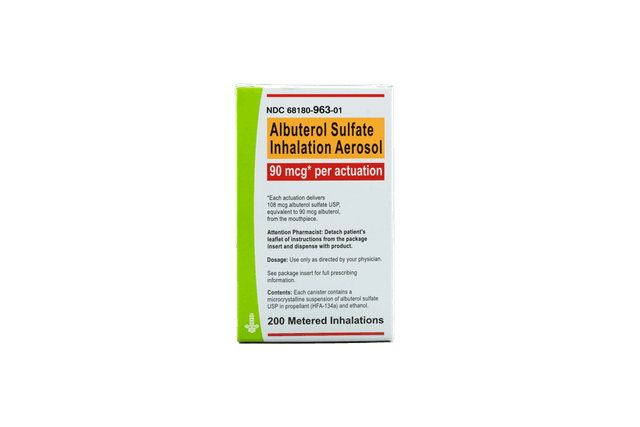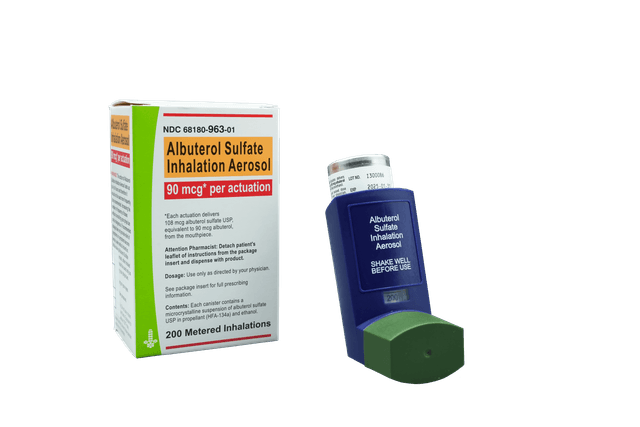Albuterol Sulfate Inhalation Aerosol
*All registered trademarks are the property of their respective owners. These products are intended for U.S. residents only.
ALBUTEROL SULFATE INHALER HELP AND SUPPORT
This website will help you learn how to use your albuterol inhaler and how to clean your albuterol inhaler. First, let’s get familiar with your inhaler by looking at all the different parts. These terms will come up a lot on this website.
When the canister and the actuator are put together, it’s usually called the inhaler
This is metal and looks like a barrel. It has the medicine in it
This is the blue plastic piece. It sprays medicine from the canister into your mouth
This shows the number of sprays left in the canister. The red background color lets you know when you need a refill
This is the short part of the inhaler that goes in your mouth. It comes with a cap
This green cap covers the mouthpiece and protects it from dust or other things getting inside
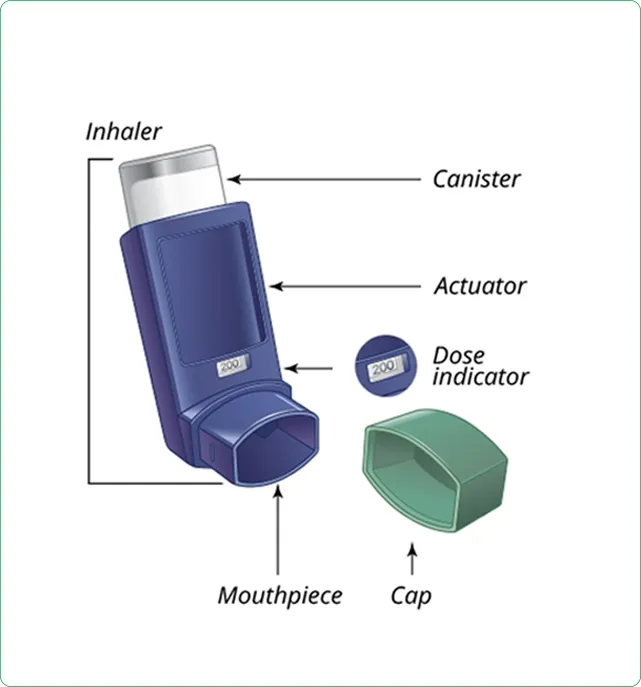
*NOTE: There is a recent minor update to the dose indicator tape color. The color has changed from green to white for readability and there are no other changes to the inhaler.

CLEANING YOUR INHALER IS VERY IMPORTANT
You need to wash your inhaler with warm water at least once a week while it’s in use
It is very important to keep your blue plastic actuator clean so the medicine will not build up and block the spray.
The inhaler may stop spraying if it is not cleaned correctly.
HOW TO CLEAN YOUR INHALER
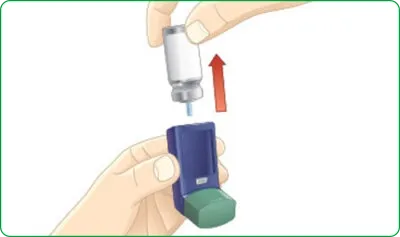
Take the metal canister out of the actuator. Do not let the canister get wet
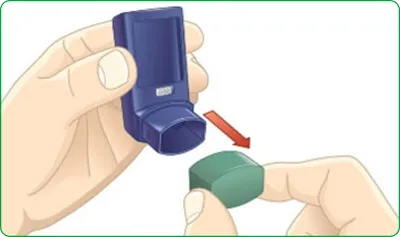
Take the cap off the mouthpiece
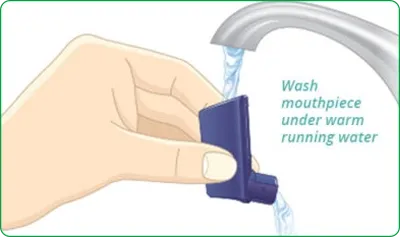
Hold the actuator under the faucet and run warm water through it for about 30 seconds
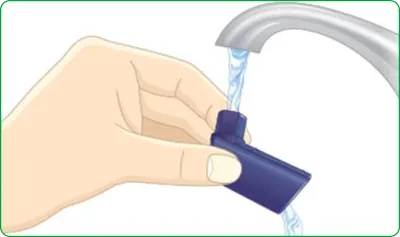
Then turn the actuator upside down and run warm water through the mouthpiece for about 30 seconds

Shake off as much water from the actuator as you can

Look in the mouthpiece to make sure any medicine build-up has been completely washed away. If there is any build-up, repeat steps 3 to 5.
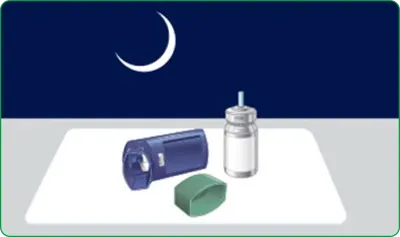
Let the actuator air dry completely, such as overnight

When the actuator is dry, put the canister in the actuator and make sure it fits firmly. Shake the inhaler well and spray it twice into the air away from your face.
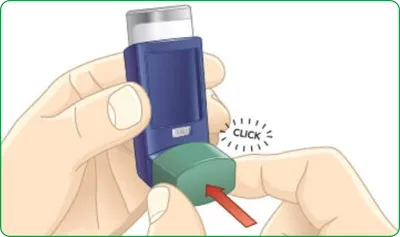
Put the cap back on the mouthpiece
WATCH HOW TO CLEAN THE INHALER
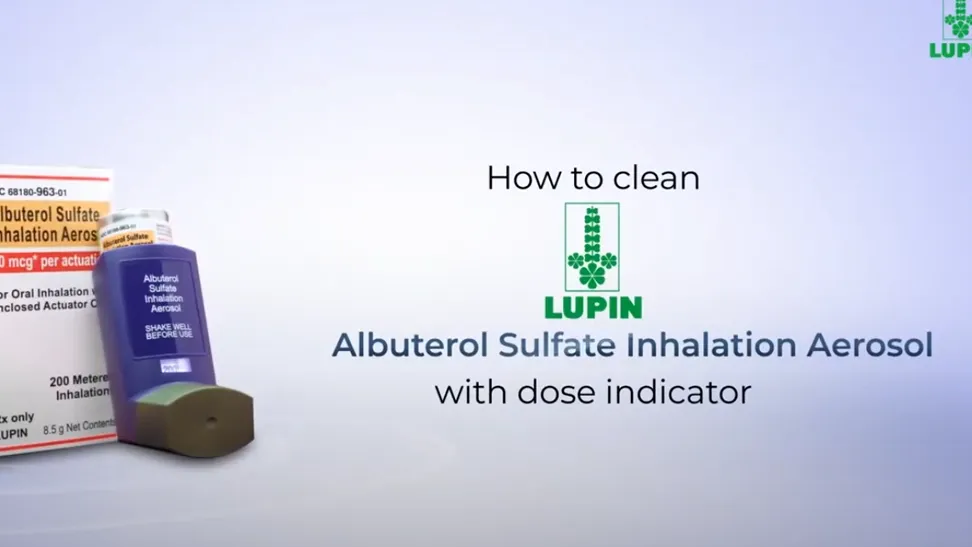

- All you need is warm water to clear medicine build-up
- Only the actuator and the mouthpiece need to be cleaned
- Do not try to clean the metal canister
- Do not use soap (or other cleaning products) when cleaning your inhaler
- Do not try to clean the inhaler with objects (like pins or knives)
- Do not put your inhaler in a dishwasher
- Do not spray more doses if the actuator is clogged; this will only block the inhaler more

For More Help
If this is the first time you are using this
inhaler, there are a few steps you need to take.
If you need help fixing a problem with your
inhaler, you can find more information below.
You can also call 1-800-399-2561 from
8:00 AM to 5:00 PM EST, Monday through
Friday to speak with someone who can help.
HELP WITH INHALER PROBLEMS
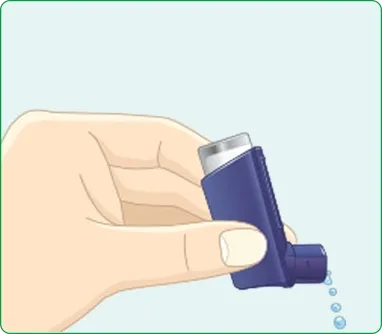
Medicine build-up can block the mouthpiece
If you press down and you don’t get a full spray…
You could have medicine build-up blocking the spray. Cleaning your inhaler with warm water can help fix this. After cleaning it, let the inhaler air dry before use.
If you are using a Lupin canister with a Lupin actuator and you are still having trouble after cleaning the inhaler, please call Lupin at 1-800-399-2561 from 8:00 AM to 5:00 PM EST, Monday through Friday.
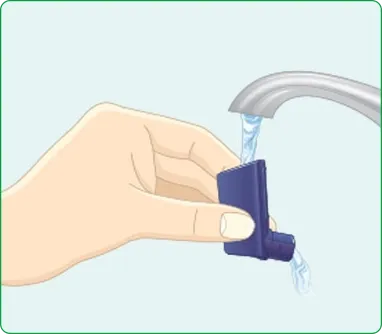
Clear medicine build-up using only warm water
If you see the dose indicator move, but medicine isn't coming out...
You could have medicine build-up blocking the spray. Cleaning your inhaler with warm water can help fix this. After cleaning it, let the inhaler air dry before use.
If you are using a Lupin canister with a Lupin actuator and you are still having trouble after cleaning the inhaler, please call Lupin at 1-800-399-2561 from 8:00 AM to 5:00 PM EST, Monday through Friday.
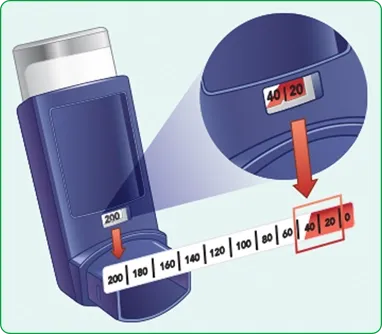
When the dose indicator is red, it is time for a refill
How does the dose indicator work?
The dose indicator lets you know when you need a refill. It keeps an exact count of every spray, but it only moves every 5 to 7 sprays. Even though it doesn’t move with every spray, you can be confident that it is counting every spray.
Use the colors on the dose indicator to see when you need a refill.
- The red background will remind you to refill your prescription or ask your doctor for another prescription for albuterol sulfate inhalation aerosol
- The background color will be all red when the dose indicator approaches "20"
- The dose indicator will stop moving at "0". Throw away (discard) the inhaler once the dose indicator displays "0"
You should not keep using the inhaler after 200 sprays even if the canister is not empty. You cannot be sure you will get any medicine in a spray after the dose indicator shows “0”.

Shake as much water off the actuator as you can
What if you need to use the inhaler before it air dries?
You should know that medicine build-up is more likely to happen if you do not let the actuator air-dry completely. If you must use the inhaler before it air dries, please take these steps:
- Shake as much water off the actuator as you can
- Place the canister in the actuator and make sure it fits firmly
- Shake the inhaler well and spray it twice into the air away from your face
- Take your albuterol inhalation aerosol dose as prescribed
- Follow the cleaning instructions above
If you cannot let the inhaler fully dry before using it, please clean it again after you take your medicine.
WATCH AND LEARN HOW TO USE THIS INHALER
If you want to know how to use the albuterol inhaler from LUPIN and see how someone cleans the inhaler, watch this video.
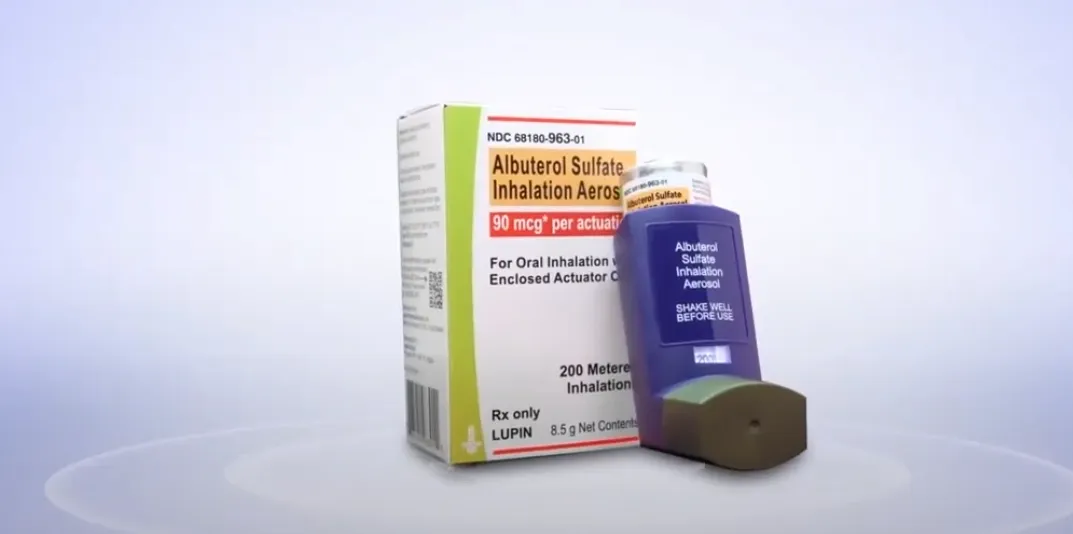

GUIDE FOR FIRST-TIME USERS
Getting the first dose ready
Before you use this inhaler for the first time, you need to get it ready. This is called "priming" it (or to "prime" it). This will help make sure there is enough medicine in each spray. You do not need to do this every time. Do not prime your inhaler every day.
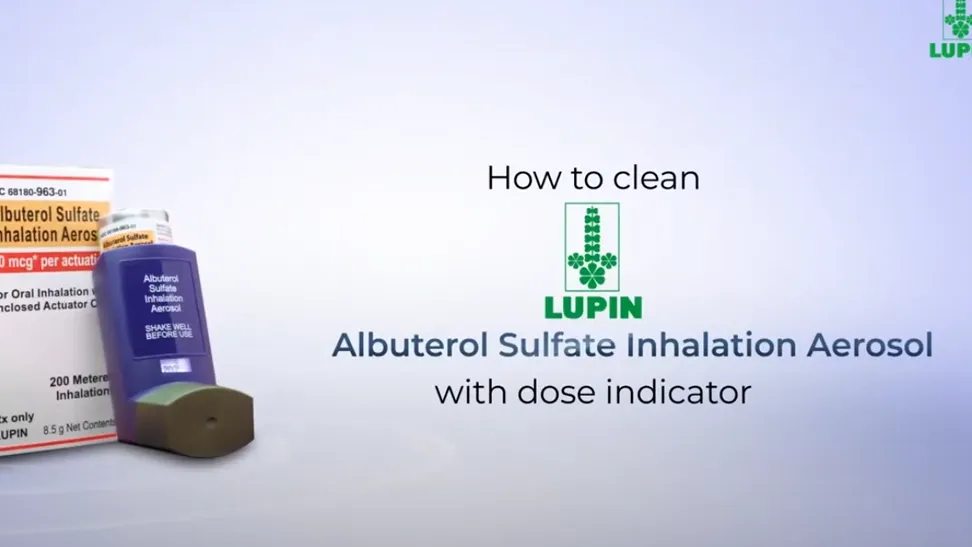

- Take the inhaler out of the package
- Take the protective dust cap off of the mouthpiece
- Shake the inhaler well and spray it into the air away from your face
Shake and spray the inhaler like this 2 more times to finish priming it
- The dose indicator should show the number “200” after you prime it the first time
To prime your Lupin albuterol inhaler, spray it 3 times into the air away from your face. Do this the first time you use it, or when it has been more than 14 days since you last used it.
TAKING THE FIRST DOSE
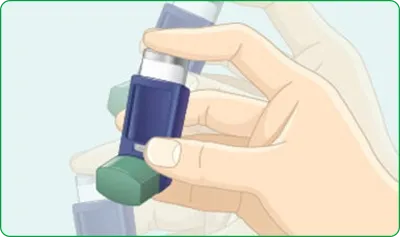
Shake the inhaler well before each spray. Take the cap off the mouthpiece.
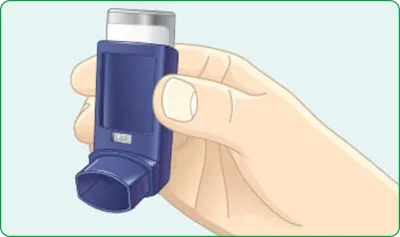
Hold the inhaler with the mouthpiece down.

Breathe out through your mouth and push as much air from your lungs as you can. Put the mouthpiece in your mouth and close your lips around it
Helpful tip: Do not breathe out into the inhaler.

Push the top of the canister all the way down while you breathe in deeply and slowly through your mouth.

Right after the spray comes out, take your finger off the canister. After you have breathed in all the way. take the inhaler out of your mouth and close your mouth

Hold your breath as long as you can, up to 10 seconds, then breathe normally. If your doctor has told you to use more sprays, wait 1 minute and shake the inhaler again. Repeat Step 2 through Step 6.
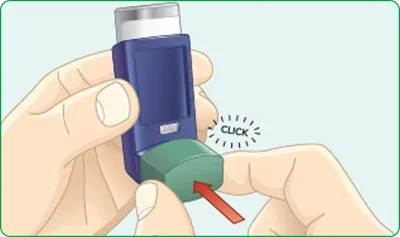
Put the cap back on the mouthpiece after every time you use the inhaler. Make sure the cap snaps firmly into place
WATCH HOW TO USE THE INHALER


RED MEANS REFILL
You should not keep using the inhaler after 200 sprays even if the canister is not empty. You cannot be sure you will get any medicine in a spray after the dose indicator shows “0”.
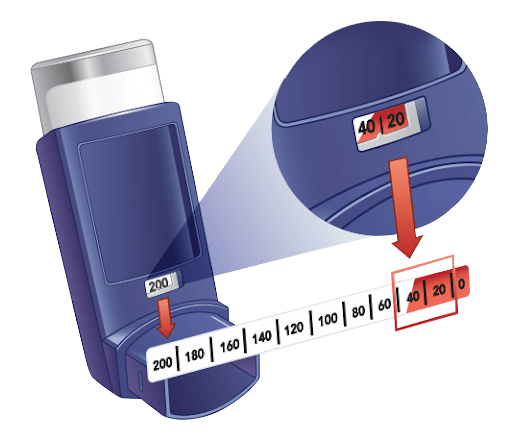
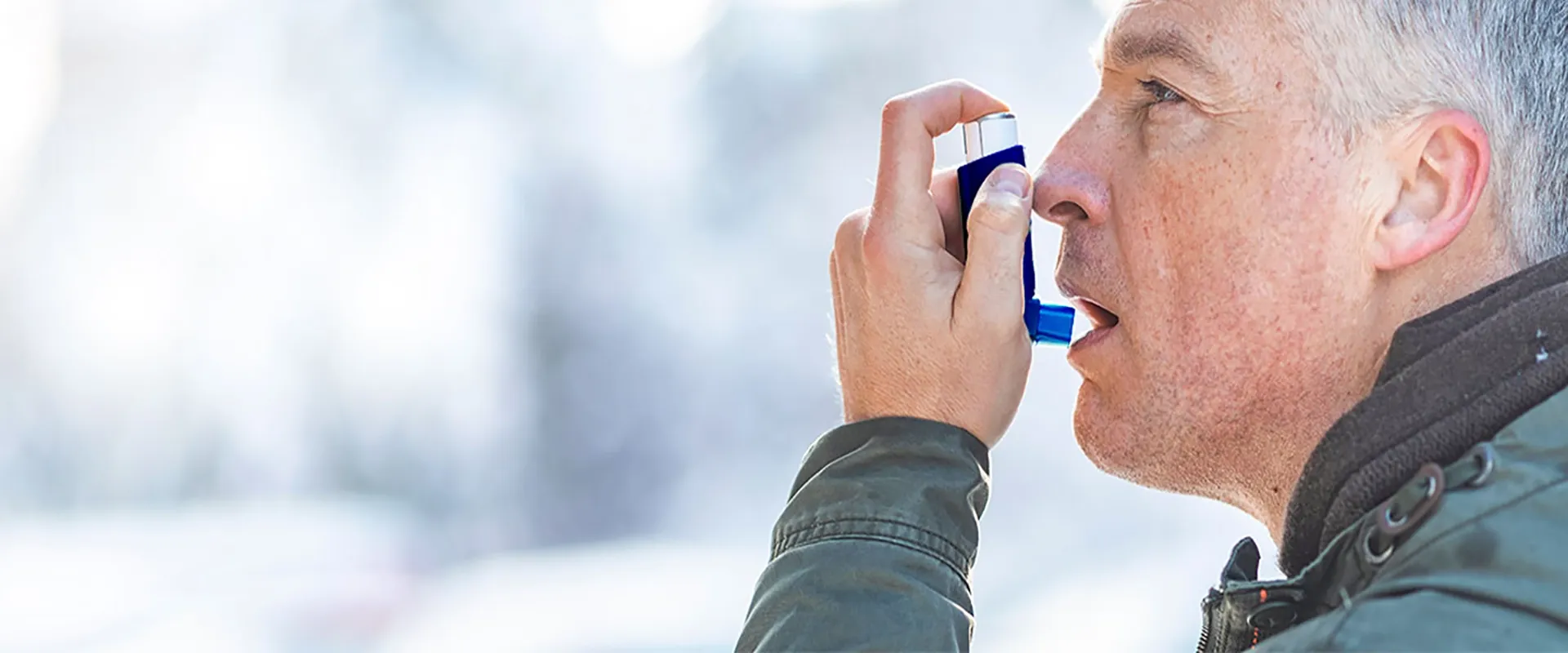
IT IS IMPORTANT TO CLEAN YOUR INHALER EVERY WEEK WHEN YOU ARE USING IT
SIMPLE TIPS TO REMEMBER

DO
- Put the cap on after every use
- Wash it with warm water once a week while it’s in use
- Allow it to fully air dry, such as overnight, after cleaning it
- When the dose indicator starts to turn red, call your pharmacy or doctor for a refill

DO NOT
- Do not prime the inhaler before each use
- Do not clean it with anything other than warm water
- Do not use the inhaler after the dose indicator displays “0”
- Do not wait longer than a week to clean it
- Do not spray more doses if the actuator is clogged; this will only block the inhaler more
- Do not use this actuator with a canister of medicine from any other inhaler
- Do not use this canister with an actuator from any other inhaler, including another albuterol sulfate inhalation aerosol inhaler

IMPORTANT SAFETY INFORMATION
Approved use
Albuterol sulfate inhalation aerosol is a prescription medicine for use in people 4 years of age and older to:
- treat or prevent bronchospasm in people with reversible obstructive airway disease
- prevent exercise-induced bronchospasm
Important Safety Information
- Do not use albuterol sulfate inhalation aerosol if you are allergic to albuterol sulfate or any other albuterol sulfate inhalation components. Ask your healthcare provider if you have any questions or are not sure.
- Before using albuterol sulfate inhalation aerosol, tell your healthcare provider about all of your medical conditions, including if you:
- have heart problems
- have high blood pressure (hypertension)
- have convulsions (seizures)
- have thyroid problems
- have diabetes
- have low potassium levels in your blood
- are pregnant or planning to become pregnant
- are breastfeeding or planning to breastfeed
- Tell your healthcare provider about all the medicines you take, especially:
- other inhaled medicines or asthma medicines
- beta blocker medicines
- diuretics
- digoxin
- monoamine oxidase inhibitors
- tricyclic antidepressants
- Do not increase your dose or take extra doses of albuterol sulfate inhalation aerosol without first talking to your healthcare provider
- Get medical help right away if albuterol sulfate inhalation aerosol no longer helps your symptoms, your symptoms get worse or you need to use your inhaler more often
- While you are using albuterol sulfate inhalation aerosol, do not use other inhaled rescue medicines and asthma medicines unless your healthcare provider tells you to do so
- Albuterol sulfate inhalation aerosol may cause serious side effects, including:
- worsening trouble breathing, coughing and wheezing (paradoxical bronchospasm). If this happens, stop using albuterol sulfate inhalation aerosol and call your healthcare provider or get emergency help right away. This is more likely to happen with your first use of a new asthma inhalation medicine
- heart problems, including faster heart rate and higher blood pressure
- possible death in people with asthma who use too much albuterol sulfate inhalation aerosol
- allergic reactions. Call your healthcare provider right away if you have the following symptoms of an allergic reaction:
- itchy skin
- swelling beneath your skin or in your throat
- rash
- worsening trouble breathing
- changes in laboratory blood values (sugar, potassium)
- The most common side effects of albuterol sulfate inhalation aerosol include:
- your heart feels like it is pounding or racing (palpitations)
- chest pain
- fast heart rate
- shakiness
- nervousness
- headache
- dizziness
- sore throat
- runny nose
- These are not all of the possible side effects of albuterol sulfate inhalation aerosol. For more information, ask your healthcare provider or pharmacist
- You are encouraged to report negative side effects of prescription drugs to the FDA. Visit www.fda.gov/medwatch, or call 1-800-FDA-1088
Please read the Full Prescribing Information.
NP-ALB-0009
© 2021 Lupin Pharmaceuticals, Inc.
Search Product



